
“I was wondering if you could ID some worms that came out of a houseplant”, states this reader in her submission regarding the brownish-red creature pictured below. “I came across your website and you guys do amazing work! I’m located in the province of Quebec, Canada, however the houseplant was gifted to me by a friend a few months ago, so I have no idea where the store sourced it from. For context, I was going away for a week, so I heavily watered all my houseplants, almost ‘flooding’ some to the point there was some standing water in the plant saucer. When I came back, there were 3 dead, dried out worms on my table, with tracks in the dust indicating they had come out of my gifted houseplant. Size-wise, they’re quite small (pencil next to one for scale). Since then I’ve noticed a dead worm every now & again on my table. Interestingly, they only appear around this one particular plant. It’s probably difficult to ID dead worms, but I thought I’d ask! Thank you!”
Now, our reader is completely right in saying that it is difficult to ID dead worms, especially when they have dried out in this manner: since the body has shriveled, its coloration is bound to have changed, and the true size of the worm is also not clear. That said, from the looks of it the top part of this organism is not completely dried out, and what we can tell is that this organism is translucent and has a bulbous red head. This points to the worm actually being a larva rather than a worm. Larvae are the immature forms of insects, who usually have three distinct stages in their life cycle after hatching from their eggs: larva, pupa and adult. Such insects include beetles, flies, moths, butterflies, and more.
Given the creature’s red coloration and that it came from a houseplant, one might be tempted to say that these are red wigglers, but those are not larvae. They actually are worms: specifically, earthworms. Besides, red wigglers are far longer than this and do not possess the same bulbous head that is common among various species of larvae. What is curious about this creature is that it does not seem to possess any prolegs (three sets of legs at the front of the body), a trait that is common among insect larvae, and particularly beetle larvae. For that reason, we would be tempted to say this is more likely a moth or butterfly larva, and in that case, the larvae would not have come from the soil of the plant, but rather from the leaves or stems of the plant. Our reader should inspect the leaves on her plant to see if there are any holes in them that a caterpillar could have made, or indeed if there are any eggs on the leaves that a moth or butterfly may have left behind.
With all of that said, if these were caterpillars that were feeding on the houseplant, then it is strange for them to have left the plant to dry up and die. So in that case, perhaps the creatures actually migrated from somewhere else and were on the way to the plant but did not make it? Though that seems unlikely as well. This is a very odd situation, and we must admit that we do not really know what to make of it. In any case, we do not think these larvae will be harmful to our reader. What we recommend is that she monitor her plant closely, and that she try to catch one of these larvae while they are still alive. If she succeeds in doing that, she is more than welcome to send us new pictures. Likewise, she may also wish to consult someone at her local county extension office, where someone will be able to physically examine the larvae. They may have a better chance at identifying them. She could even do this with the dead larvae if she wishes to, but as she said, it is naturally more difficult to identify dead organisms.
To conclude, we do not know what these worm-like creatures are, though what we can say is that they are definitely some type of larva. And if they were any type of larva, our guess is that they were caterpillars that were munching on the plant. Perhaps it simply got too warm and dry in the room, so the caterpillars dropped from the plant and died. It is difficult to say. Even though we were not able to provide a specific identification, we hope something in this article proves helpful, and we wish our reader the very best!
All About Worms is always free, always reader-supported. Your tips via CashApp, Venmo, or Paypal are appreciated! Receipts will come from ISIPP Publishing.
You might also find these guys interesting!






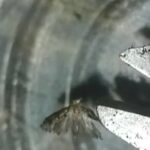
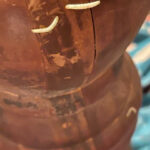
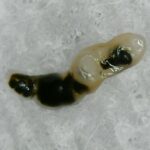
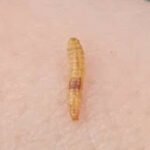
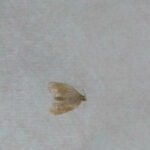
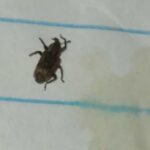
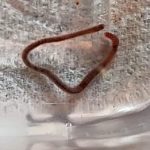



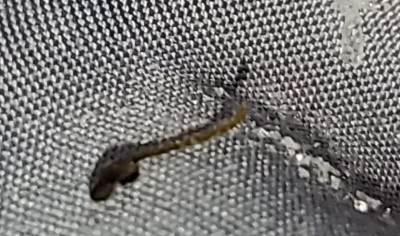


Did you notice the hairs all around the dead creature? There’s a big one in the bottom left, one about it and smaller ones all around it. ?